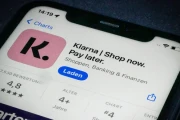Beyond the Hype: Why Klarna's IPO Signals the Dawn of a New Financial Reali...
2025-10-04 50 klarna
Klarna's Premium Play: A Data-Driven Look at Their Bid to Dethrone Credit Cards
Klarna, the Stockholm-based giant synonymous with Buy Now, Pay Later, just fired a loud, clear shot across the bow of the traditional credit card industry. The company has unveiled a global membership program, complete with premium perks, metal cards, and a monthly subscription fee. The core marketing pitch is surgically precise: all the benefits of an elite credit card, with none of the associated debt. It’s a compelling narrative.
But a compelling narrative and a sound value proposition are two very different things. The launch of the “Premium” and “Max” tiers represents a significant strategic pivot for a company built on facilitating small, interest-free installment payments for online shoppers. They are moving from the world of transactional finance into the highly competitive, high-margin arena of subscription-based loyalty.
My analysis suggests this isn't just about offering perks. It's a calculated attempt to rewire the consumer's financial operating system, shifting Klarna from a simple payment tool into a central banking hub. The fundamental question, however, is whether the numbers actually support the marketing. Is this a genuine consumer-first innovation, or is it a Trojan horse for recurring revenue, dressed up in the language of financial empowerment?
Let’s break down the raw data. Klarna is offering two tiers. The "Premium" plan runs €17.99 per month, while the "Max" tier costs a substantial €44.99 per month (about $52 at current exchange rates). Annually, that’s €215.88 and €539.88, respectively. These are not insignificant sums; they place Klarna squarely in the same price territory as the annual fees for cards like the American Express Gold or Chase Sapphire Preferred.
In exchange, Klarna claims to offer a staggering amount of value. The Premium tier supposedly delivers over €2,000 in annual perks, while the Max tier boasts a value of more than €5,000. These benefits include airport lounge access, various insurance products, and subscriptions to services like ClassPass, Headspace, and The New York Times.
The mechanism is the key differentiator. Unlike a traditional `Klarna credit card`, these perks are tied to the `Klarna Card`, which functions more like a debit card linked to a user's pre-funded `Klarna account`. Chief Marketing Officer David Sandström states, "consumers shouldn’t have to take on expensive credit to access premium benefits." This is the central thesis of the entire initiative, as seen in the announcement Klarna Launches Memberships: Premium Perks Without Expensive Credit. By decoupling perks from credit, Klarna argues it is democratizing financial luxury.

But this is where I find the first major discrepancy. The value of a perk is not its retail price; it's its utility to the end user. The €5,000 figure is what I would call "maximum theoretical value"—an accounting trick common in the loyalty industry. It assumes a user perfectly utilizes every single subscription, travels enough to maximize lounge access, and files claims on every insurance policy. It’s like a casino advertising a jackpot: the number is big and attractive, but the expected return for the average player is far, far lower.
The real product here isn't the collection of perks. The real product is the subscription itself, and Klarna is betting on the same psychological principle that powers gym memberships: breakage. Breakage is the industry term for the value of services that customers pay for but never use. It’s pure profit.
I've analyzed loyalty programs for years, and the business model is almost always built on the gap between perceived value and actual utilization. Klarna is claiming a return multiple of over 9x for its Max members (€5,000+ value for a €540 cost). To be more exact, it's a minimum 9.26x return on spend. That figure is an outlier. For comparison, the US-based Klarna Plus program, launched in January 2024 for $7.99 a month, reported that members saved an average of $18 in their first month—a solid, but far more believable, 2.25x return. What accounts for this sudden, exponential jump in claimed value?
This leads to the critical question of audience alignment. Klarna’s massive user base—over 111 million global active users—was built on the promise of financial flexibility for everyday purchases. The service helped people budget for a new pair of Nikes, not book a first-class flight. Now, Klarna is asking this same demographic to pay up to €540 a year for perks traditionally targeted at affluent, high-spending road warriors. How many of Klarna’s core users will find value in unlimited airport lounge access? What is the actual, addressable market for a premium service within a user base defined by its preference for installment payments? We don't have the data on user demographics to answer that definitively, but the potential for a mismatch is significant.
This entire structure is less like a credit card and more like a curated bundle of direct-to-consumer subscriptions. Klarna is acting as a reseller, using its scale to negotiate bulk deals on services and then packaging them for a monthly fee. It’s a clever play, turning the `Klarna app` into a lifestyle portal. But it also feels like an arbitrage on consumer attention and inertia. Once a user is subscribed, how likely are they to constantly re-evaluate if they’re getting their €44.99 worth each month?
The whole model is an elegant financial instrument designed to capture recurring revenue. It’s a strategic shift away from the volatile, transaction-dependent world of BNPL, which is facing increased competition from players like `Afterpay`, `Affirm`, and even legacy providers like `PayPal`. This subscription fee is stable, predictable, and high-margin.
Ultimately, Klarna's premium membership isn't a war on credit cards. It's a war for account primacy. The goal is to become the financial "super app" that analysts like Ben Danner have pointed out, a central hub where users store their funds, manage their payments, and now, access their lifestyle perks. The monthly fee is the price of admission to this curated ecosystem.
My analysis concludes that this is a brilliant move for Klarna's business model, but a questionable value proposition for a large portion of its existing user base. The company is betting that the allure of a "premium" lifestyle, symbolized by a heavy, rose gold metal card, will be enough to convince users to commit to a hefty subscription. They are leveraging the psychology of aspiration. This isn't about saving consumers from the evils of credit; it's about creating a new, more predictable revenue stream for Klarna, built on the high probability that most users will pay for far more value than they will ever actually consume. It’s a subscription treadmill, and Klarna is hoping millions are ready to start running.
Tags: klarna
Related Articles

Beyond the Hype: Why Klarna's IPO Signals the Dawn of a New Financial Reali...
2025-10-04 50 klarna